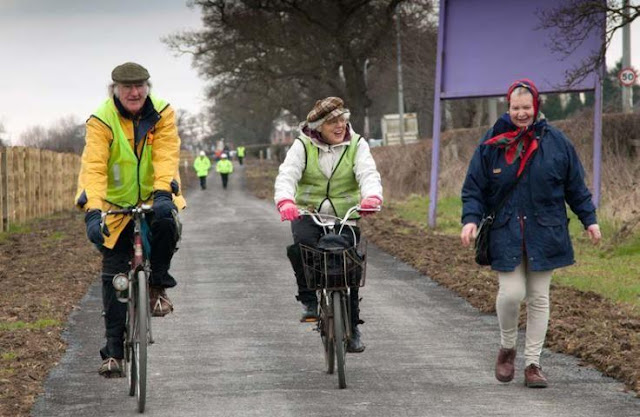I broke a law.
Well, it may not have been a law where I committed the evil deed. But a man did the same thing in another locale and was arrested.
To be fair, there was a warrant for his capture. And the violation was just one charged to him when he was apprehended.
The cops who effected the bust were based in barracks in a town with one of the most quirkily beautiful toponyms I’ve heard: Shickshinny, Pennsylvania. Imagine answering the query, “Where are you from?” with that.
Anyway, the benighted soul they ensnared, 51-year-old David Thomas Totten of Wilkes-Barre, was riding a bicycle eastbound in the westbound traffic lane of West End Road in Hanover Township. It was just after midnight on 4 September 2023 and Totten didn’t have any lights on his bike.
Now, some officers might ignore such breaches of bicycle safety protocols. And unless the officers on duty had been involved with whatever led to Totten’s warrant—or there’s some tagging technology we don’t know about—they couldn’t have known about that warrant . So the question remains of what prompted the ones on duty to stop Totten and conduct a search that yielded a cigarette pack hiding suspected methamphetamine and a syringe.
Now, I’ve never smoked, owned or used a syringe or anything that could be construed as methamphetamine or had warrant for my arrest (that I know of!). I’ll concede that I’ve ridden in the dark without lights or reflectors, though not within the past few decades. So what, exactly have both Mr. Totten and I done that resulted in an arrest for him, but not me.
He was carrying a table when he was stopped. I’ve done it, too, on more than one occasion. I’ve also carried chairs and bookcases—and a framed art pieces, including one that measured at least 2 feet by 3 feet (61 by 91 cm.).
The latter was a delivery I made, as a Manhattan bike messenger, from a Soho gallery to Judy Collins (yes, that one) on the Upper Wear Side. I made similar runs with oversized objets d’art and home furnishings in the steel and concrete canyons. I also hauled them as part of a move from one neighborhoods to another.
Of course, the prints, tables and such didn’t fit into my messenger bag, backpack, panniers or whatever I was using to haul stuff on my bike. So, of course, I had to carry the item in one hand and navigate the bike with the other.
Such practices, it turns out, are transgressions against Chapter 35, Subchapter A, Section 3506 of the Pennsylvania vehicle code:
“ No person operating a pedal cycle shall carry any package, bundle, or article which prevents the driver from keeping at least one hand upon the handlebars.”
I guess it’s a good thing I was in New York and New Jersey when I committed my foul deeds—unless, of course, the Empire and Garden States have statutes like the one in the Keystone State. Then again, if said laws exist, I would guess that the statute of limitations has run out. (Is that one of the benefits of getting older?)


























